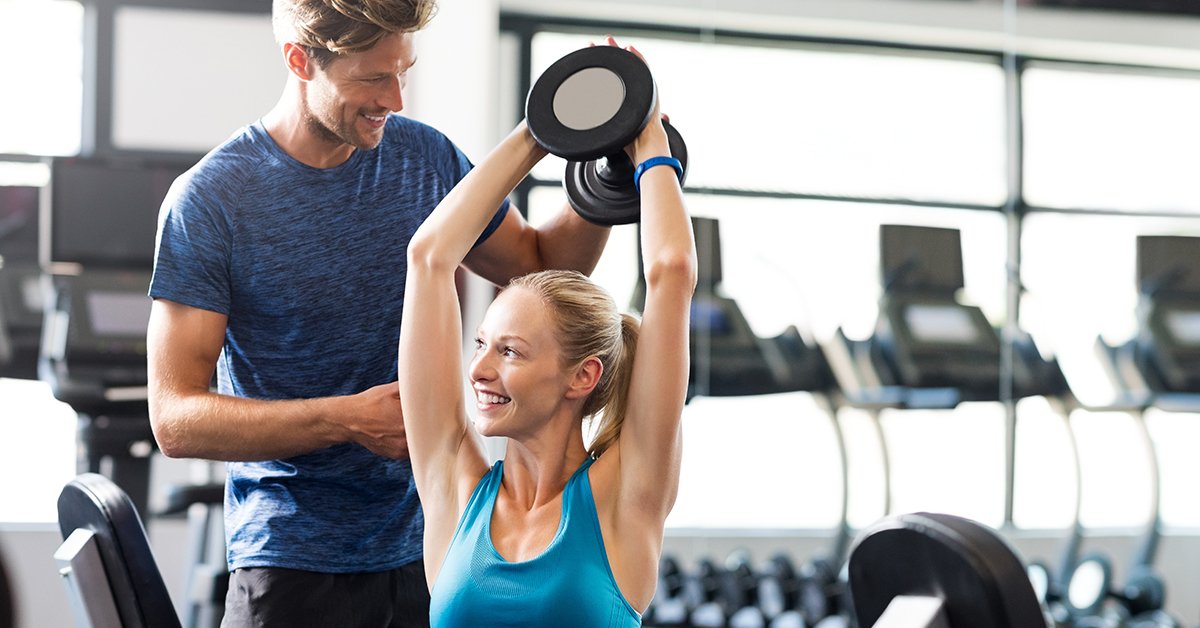
You will need to gradually increase the weight and reps of your strength training program over the 12 weeks. Begin with the low rep range and work up to 1-2 sets each week. The intensity of your workout will increase if you can lift more weight than you are currently using.
Level 1
The first level of a 12 week strength training program focuses on fundamental strength training and proper movement patterns. It aims to create a strong foundation for advanced lifting. You'll learn new movements in this phase and have the chance to lift more weight. These exercises should be performed two to four times a week. However, you may find it more beneficial to do them on more days.
You'll do a decompression loop at the end of every training session that includes dynamic and static stretches. This circuit helps to recover from intense training, and improves mobility. It takes only five minutes to complete. This allows the body to adapt to its surroundings outside the gym.

Tracking your macronutrients
Tracking your macronutrients is essential for building muscle and losing fat. You can optimize your training results by tracking how many calories and how much each type of food you eat. In addition, tracking your macronutrients allows you to determine whether your macro diet is meeting your daily nutrient requirements.
Although it may seem daunting at first, you can track your macronutrients to make things easier. Consider how many calories you consume each day. Ideally, you should be eating about 2,640 calories per day. This is 10% more than your usual calorie intake.
Exercises to increase strength
When performing strength training exercises, there are many things you should remember. It is important to keep your workouts running smoothly that you have a 30- to 60 second rest period between sets. Intermediate lifters may prefer a longer rest period but can still add a few seconds in between sets to push themselves further. In the first week, it is a good idea for strength trainers to alternate between workouts A or B.
To build strength, the squat can be one of your most basic exercises. This exercise activates your glutes. For a good workout, perform at least 1-3 sets with eight to twelve repetitions. The plank is another great exercise to build strength. The plank is a great exercise for strengthening your back, chest and shoulders. It also improves core strength.

Photographing progress
If you are following a 12-week strength training program, taking progress pictures can help you see how far you have come. To ensure you take progress photos, there are a few key steps. First, pick a time when you can take progress shots. Second, make sure you have a full-length mirror. Third, make sure you wear the same outfit every time you take a progress picture. Next, be creative with your poses, such as flexing or relaxed.
Take progress pictures to begin documenting your journey. Your first set should be taken, followed by four more sets. The ideal scenario is to take your photos at the same hour of the day, in the exact outfit, and from the same angle. This will allow you to compare the photos side by side and see how you have changed. This can help you stay focused and on the right track.
FAQ
What is Resistance Training?
Resistance training includes using weights and other objects to perform specific movements. Lifting weights can strengthen your arms, shoulders and chest as well as your back, legs and core. Resistance training promotes strength, muscle mass, and bone density.
What happens if I don’t get enough sleep?
Lack of sleep means that your brain does not receive enough signals to regulate hormones. You may also gain weight and overeat. Sleep deprivation can also lead to excessive weight gain.
Can I eat when I'm working out?
Yes. Yes. Watermelon, grapes (or carrots or celery), watermelon, grapes, apples, bananas or apples are all low-calorie snacks. These foods contain nutrients that help you perform better during workouts.
How exercise and nutrition can help to live a happier life
Exercise helps you to stay healthy, lose weight, gain muscle mass, and reduce stress. Nutrition is important for energy, sleep, mood, and overall health. For a longer life expectancy, reduce your intake of meat and alcohol, smoke less, and exercise regularly.
Do I need heat before exercising?
Warming up before an activity can reduce muscle soreness, improve performance, and help to prevent injury. Warming up can be done in many ways: running, walking, jumping ropes, stretching and cycling are all options. Begin slowly, and then increase the intensity.
Statistics
- Adolescent girls were less active than adolescent boys, with 85% vs. 78% not meeting WHO recommendations of at least 60 minutes of moderate to vigorous intensity physical activity per day. (who.int)
- Physical activity confers the following maternal and fetal health benefits: a decreased risk of pre-eclampsia, gestational hypertension, gestational diabetes (for example, 30% reduction in risk) (who.int)
- Globally, 81% of adolescents aged 11-17 years were insufficiently physically active in 2016. (who.int)
- An estimated 110,000 deaths per year could be prevented (cdc.gov)
External Links
How To
How to Burn Belly Fats Quicker
Belly Fat is usually seen as a problem when we want to lose weight. But if you think about it, Belly Fat is actually a good thing. Your organs are protected by the fat around your stomach. So let's see how to burn belly fat fast.
Lack of exercise and stress are the main reasons we store body fat. Cortisol hormone is stimulated by stress, which causes us to feel constantly hungry. Cortisol levels are increased by insulin. The excess calories are stored as fat by insulin. A lack of sleep leads to adrenaline being released into the system which causes an increased appetite. These extra calories can be broken down by exercising.
There are many options to reduce belly weight. Depending on your budget, you can try each one. These tips will help you quickly get rid of belly fat.
-
You can eat less. Don't eat three large meals at once. You'll eat fewer calories this way.
-
Drink lots of water. Water flushes out toxins, and keeps your body hydrated. Water before each meal can help you feel fuller longer and reduce your appetite so that you don't overeat.
-
Avoid eating unhealthy snacks. If you're looking for quick fixes, snack foods like chips, cookies, candies, etc. might seem tempting. But avoid these fattening treats as they contain lots of empty calories and too much sugar. Choose healthy options like whole grains, fruits, vegetables, nuts, seeds and nuts.
-
Strength training should be performed at least 3 times per week. Strength training builds muscle mass that burns more calories, even when it is done while you rest. It strengthens bones and muscles, ligaments, muscles, tendons, heart, lungs, as well as joints.
-
Stretching and walking are good habits. Stretching improves flexibility and mobility which can reduce back pain. Walking can help you burn calories.
-
Reduce alcohol intake. Reduce alcohol intake. Alcohol is a waste of calories and has no nutritional value.
-
Slowly lose weight. To lose weight, the first step is to determine what your current weight. Add 5%-10% of your total bodyweight to calculate your ideal size. Once you have reached your target weight, begin decreasing your daily calories intake by 500-1 000 calories until you reach your goal.
-
Avoid processed food. These foods are high-in salt, sugar, as well as preservatives. Although they are convenient, processed foods don't have enough nutrients to sustain your health.
-
Don't skip breakfast! Breakfast is good for your concentration, memory, and energy. Protein (like eggs), fiber and complex carbohydrates (like oatmeal) should be included in breakfast.
-
Have regular bowel movements. Constipation and irregularity can cause gas and bloating. This can be prevented by drinking plenty of water and increasing fiber intake.